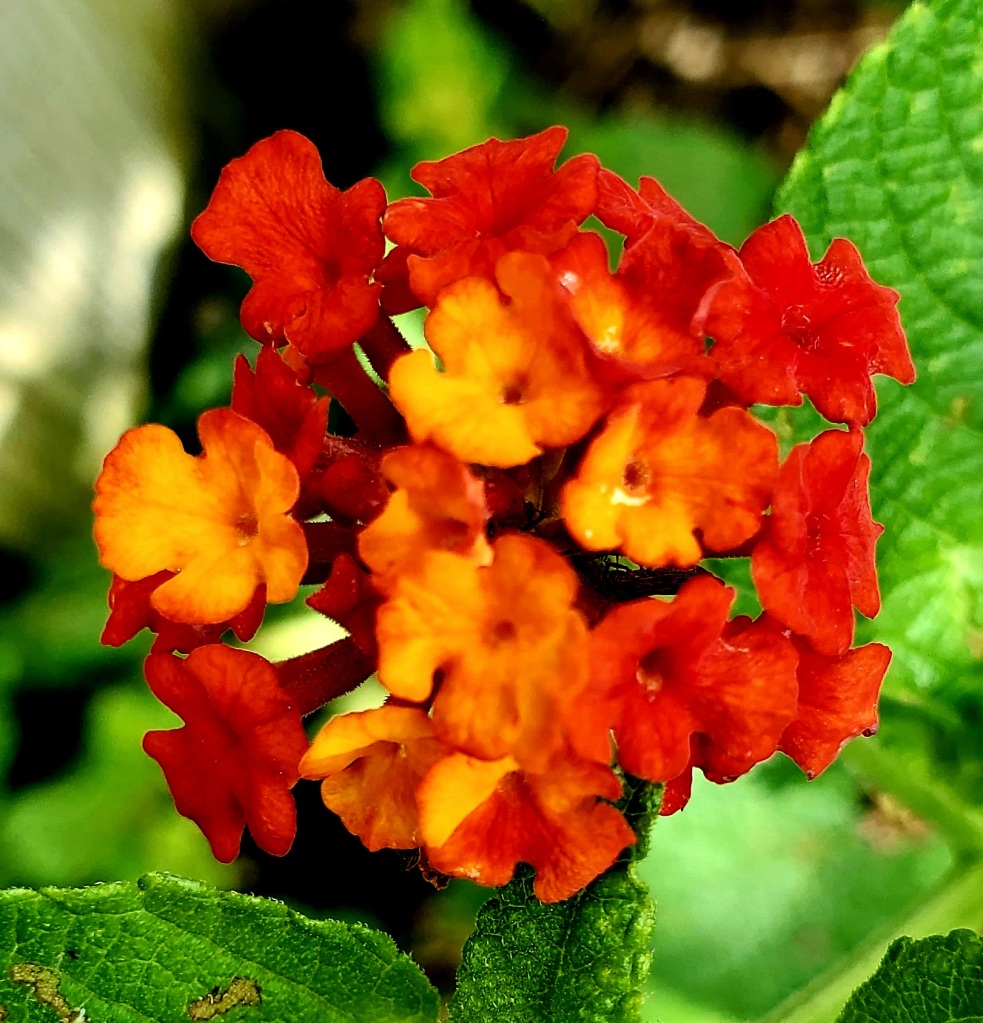
I live in the South. Where I am: summer ends up getting really hot (above 100° Fahrenheit) with little to no rain for months at a time. In summer we get moisture that blows in from the Gulf of Mexico and that humidity (without rain) is a real problem. There are weeks where we don’t drop below 100 degrees until well after midnight. The heat here is relentless. So, the plants I grow have to be super performers to make it through our summer weather. I live in zone 9a, so I can grow a lot of tropical and semi-tropical plants as perennials. I have zone 10 plants, that grow back from the roots every spring, and by summer they are pumping out beautiful flowers. It’s taken a lot of trial and error to figure out what will work for me. I live on a quarter acre lot and I don’t want to have to buy new plants for that much space every year. So, I have compiled a list of flowering shrubs that do particularly well in our conditions: triple digit heat, high pH soil, plants that will come back (at the least) from the roots in zone 9, drought tolerant and with showy flowers.
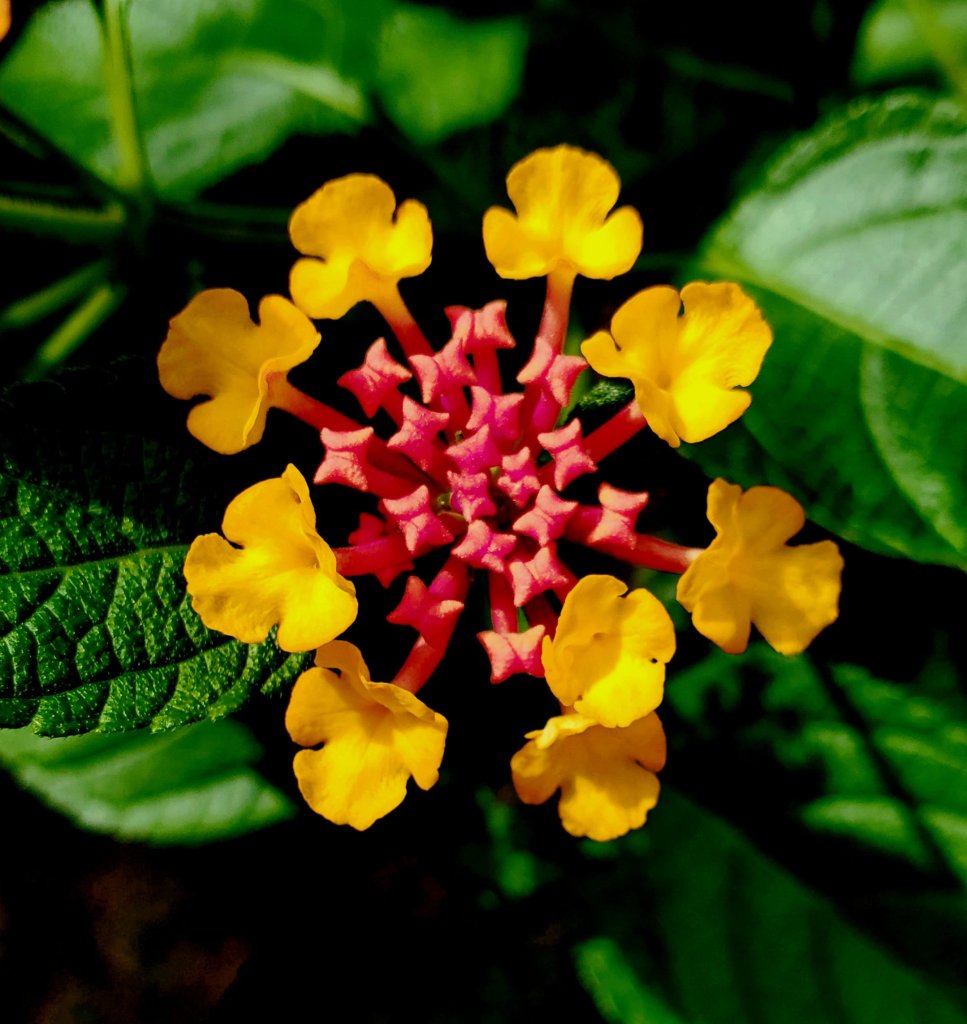
I do take some precautions over our winters. I know that the above ground parts of these plants will freeze back so I make sure to cut them down and tip an upside down pot over the root ball for some extra protection. For super tender plants like bananas I chop the roots off of about 2/3 of the plant so that I can lay it down and cover it with a bale of loose straw and a tarp. I was surprised that any part of the banana survived our -16 degree fahrenheit weather last winter, and although the stem failed, the root ball came back with gusto. I am hoping this winter we will be back to normal and the stem will survive (you need two years of growth with most bananas to get fruit.)
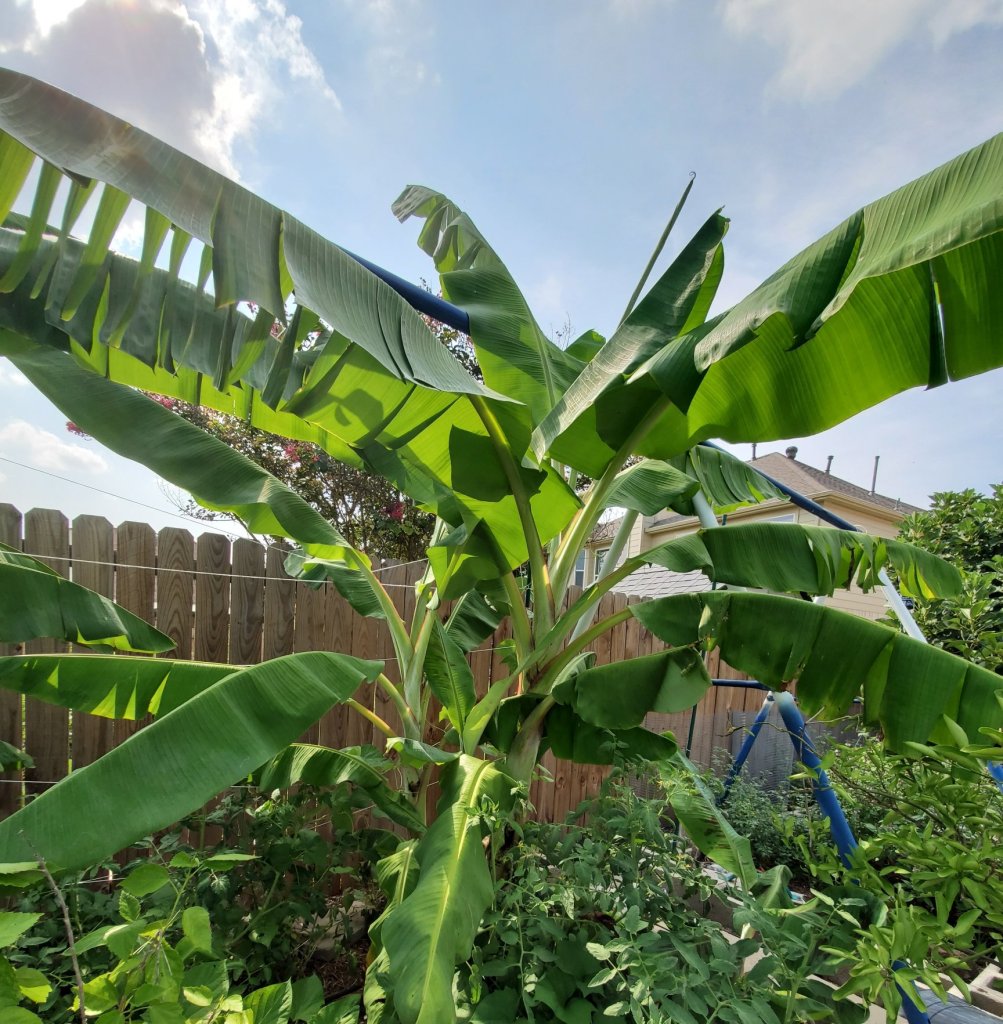
Even with last year’s crazy cold winter, most of my zone 10 plants came back, and even a very cold sensitive, antique banana variety: Gros Michel, made it through.
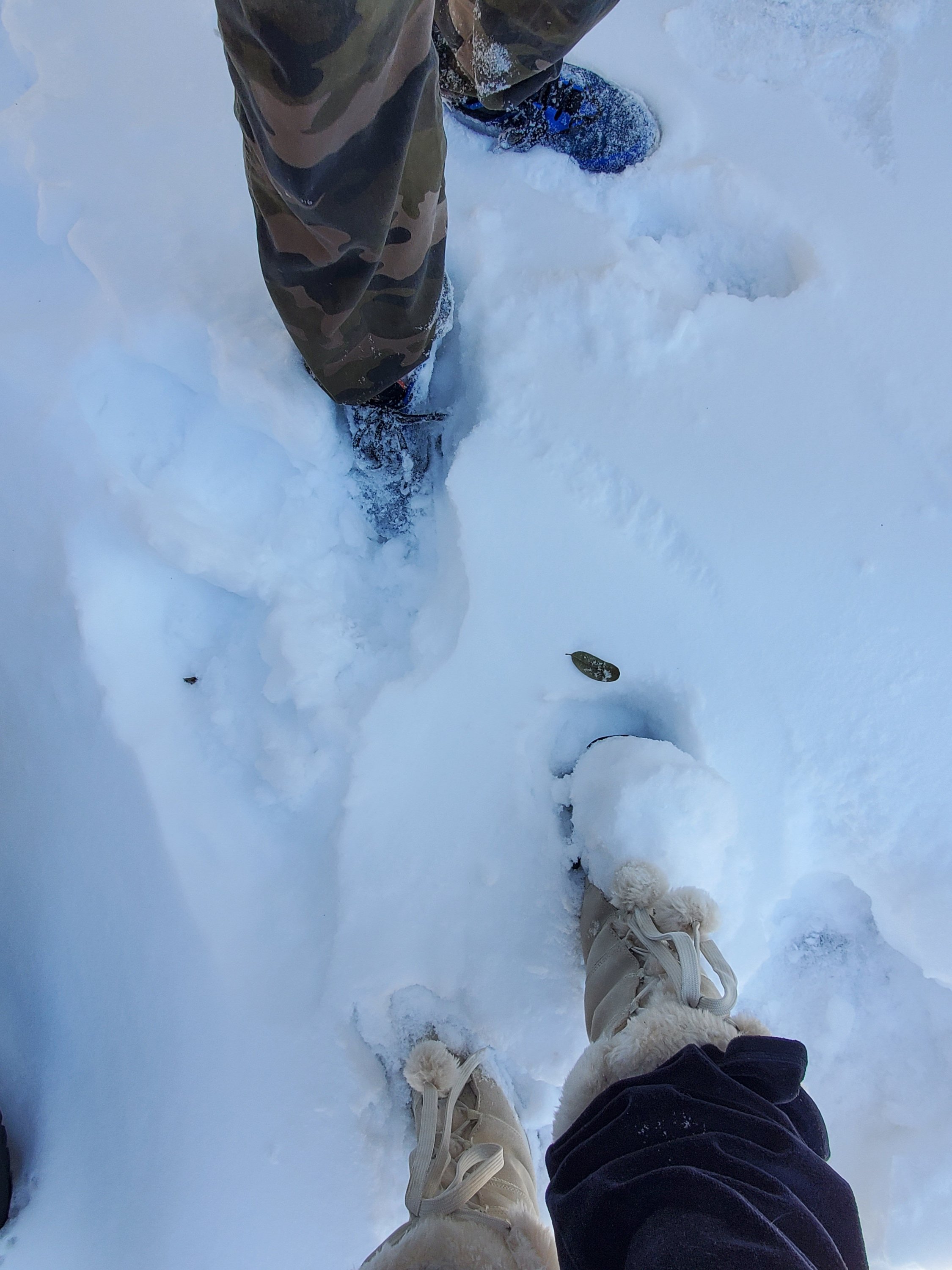
Our winter was crazy. This much snow is unheard of in my part of the world.
If you love loads of flowers in summer then there are some really beautiful plants that can be grown down here. The plants I will list below are floriferous, carefree growers that are well behaved and large enough to be considered shrubs or small trees. But, you can’t get picky with what is available, because even though these are super bloomers: there aren’t many other plants that really do this well in this heat and drought. If you notice: I took some of these photos in parking lots. If you can grow something in the middle of a hot as hell asphalt parking lot, in south Texas, in the middle of summer: you know these plants have to be indestructible!
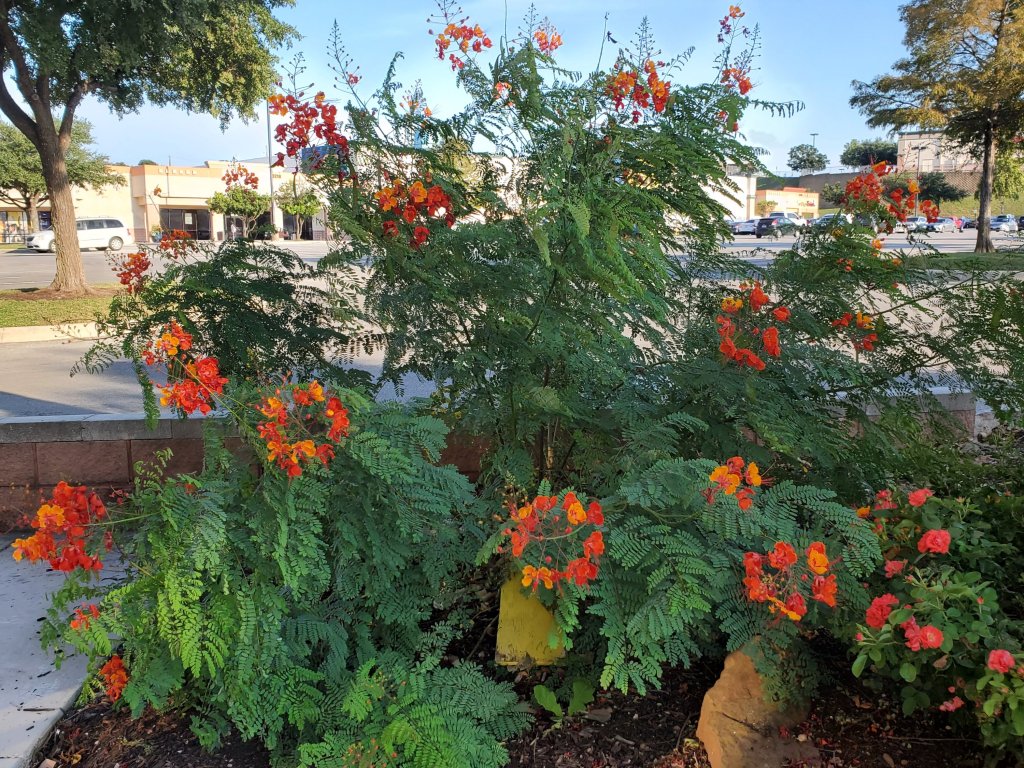
I think my very favorite shrub for zone 8b/9a is the Mexican Bird of Paradise or Pride of Barbados (Caesalpinia Mexicana). These are not the fully tropical bird of paradise that you see all over Hawaii, they are reliable (to zone 8) plants that usually make it through the few freezes that we get. I planted one ten years ago and it’s still going strong.
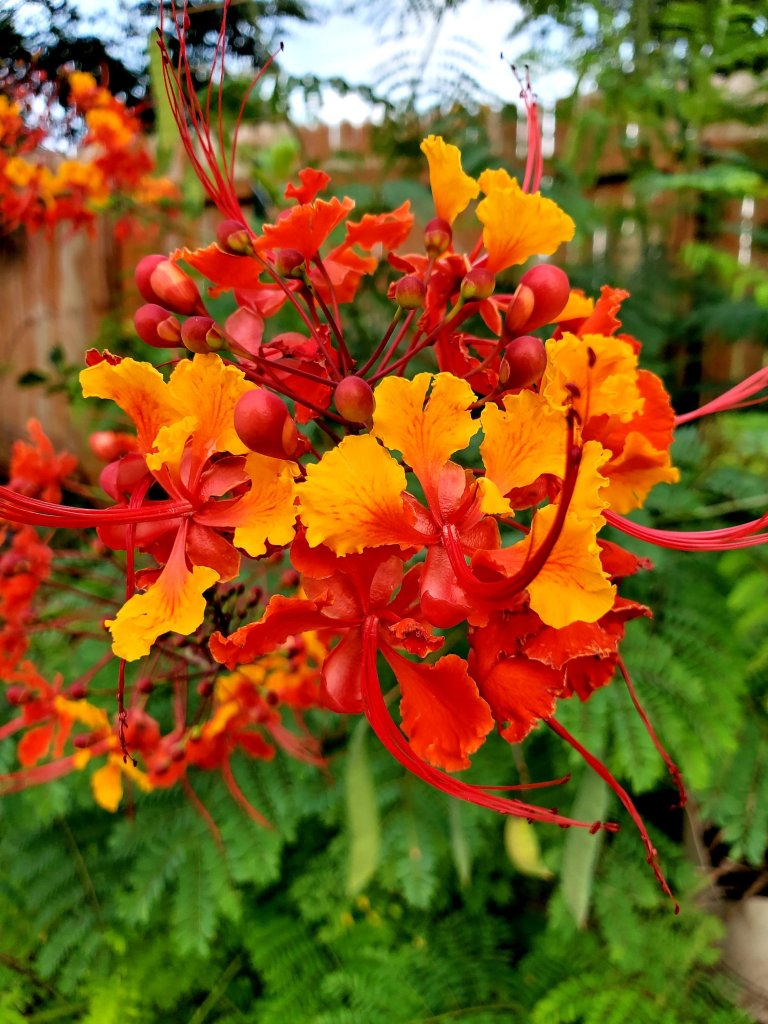

I love it so much I planted a bunch along the sunny south side of my house this year. I just can’t get enough of these flowers, and our local hummingbirds agree! These are easy to grow from seed. They produce bean pods (they are a legume and as such are nitrogen fixers, but the pods, seeds and leaves are poisonous) with super hard seeds that must be scarified in order to get them to sprout. I just rub one on a fingernail file until I see the white interior and drop them in a little bowl of water until they sprout. These plants are big and airy. With blooms on the tips of new growth, you will want to avoid pruning it. Full sun will get you extraordinary blooms. This really is a beautiful and impressive plant!
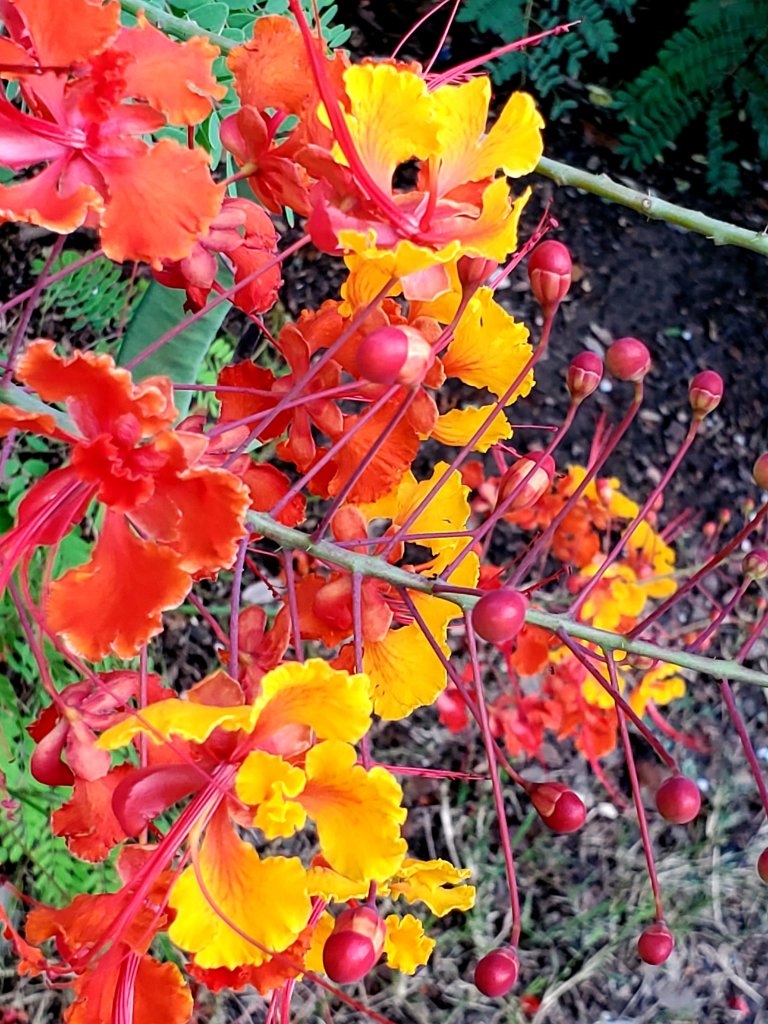
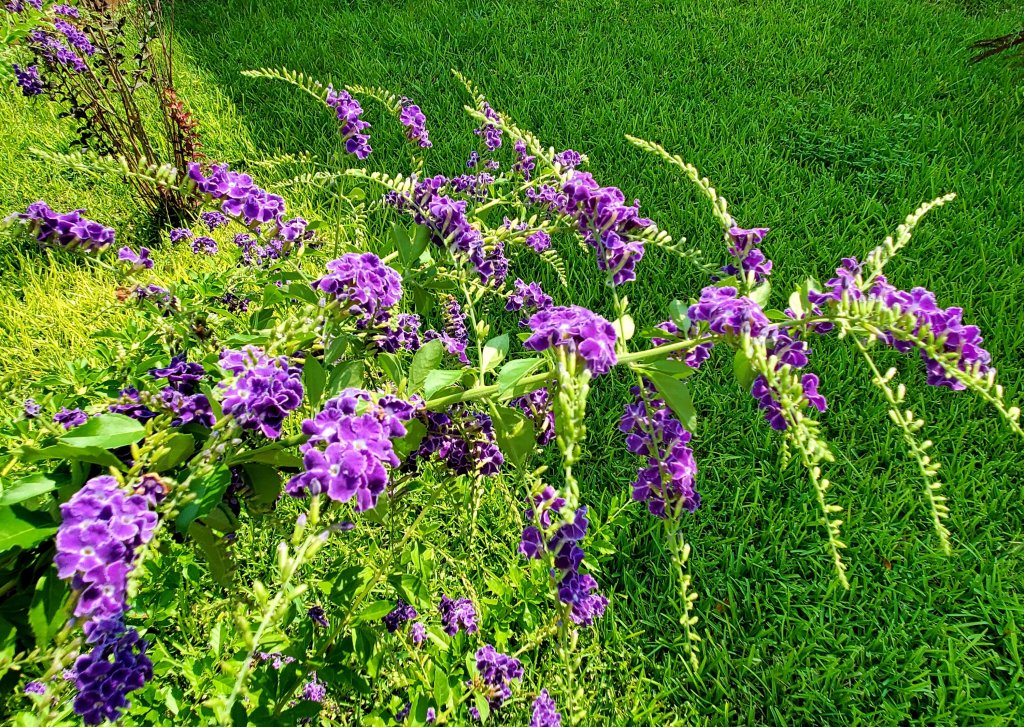
My second favorite looks like fireworks. Duranta Erecta looks like miniature orchid blossoms blooming up to the very tips of its branches. It is a fascinating flowering shrub and I always take some time when I’m near it to examine and appreciate its beautiful little flower sprays.
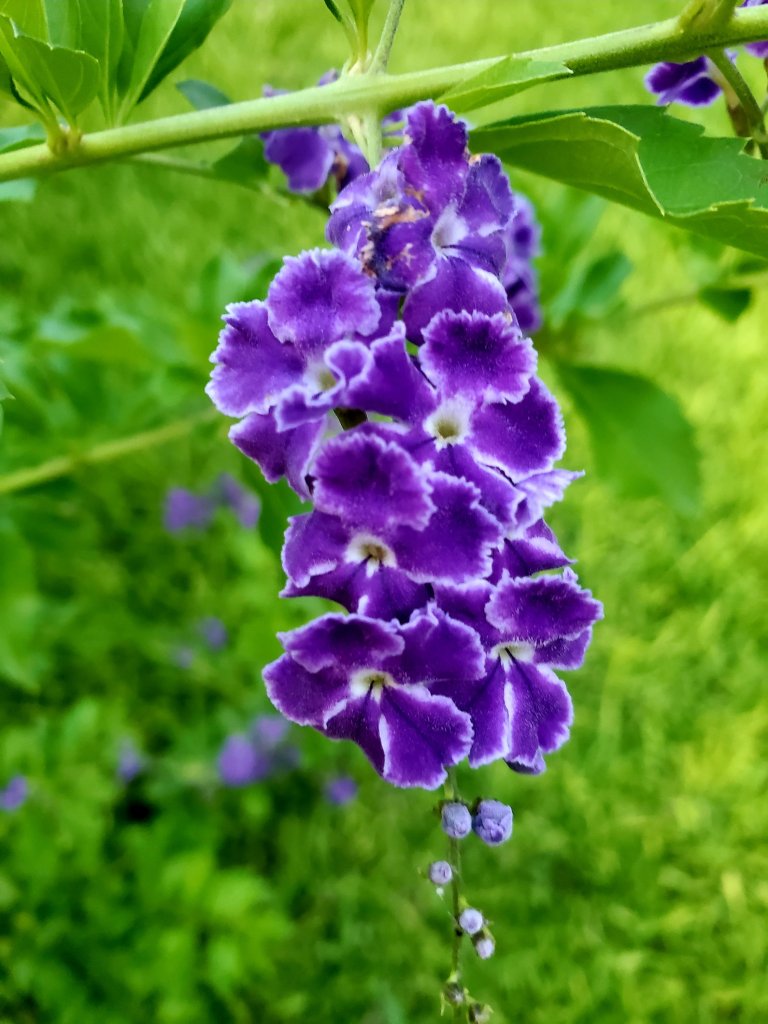
These blooms aren’t big but they make up for it with intricacy of the petals and the amount of flowers blooming at once. It reminds me of fireworks. I will always grow this plant, because it has secured a special place in my heart. It produces little yellow berries in winter that the birds love. I do not have problems with any of these plants as far as spreading or reseeding. These varieties are polite growers.
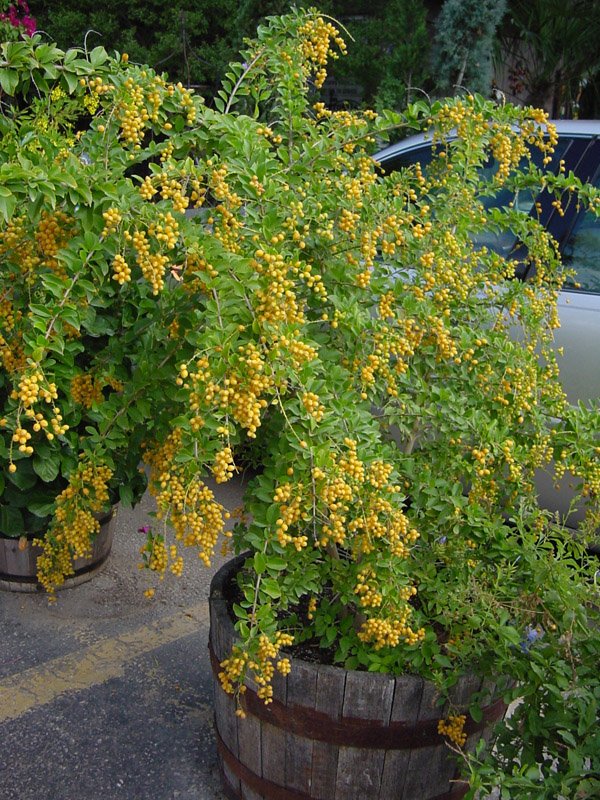

Another favorite is commonly known as yellow bells. I tried to help a lady who was wandering through a nursery that was trying to find esperanza. She didn’t believe me that yellow bells were esperanza. When people don’t understand that many plants have more than a few common names, it can be frustrating. So I will give you it’s scientific name (in case she ends up reading this)😊: Tecoma Stans. This beautiful glossy leafed bush produces fountains of yellow bell shaped blooms in full sun. Mixing these with the Mexican bird of paradise will give you a beautiful effect. Yellow bells is tall and narrow, until it blooms and the flower clusters weigh down the tips of its branches. The Mexican bird of paradise is rounded and airy. They look nice together.

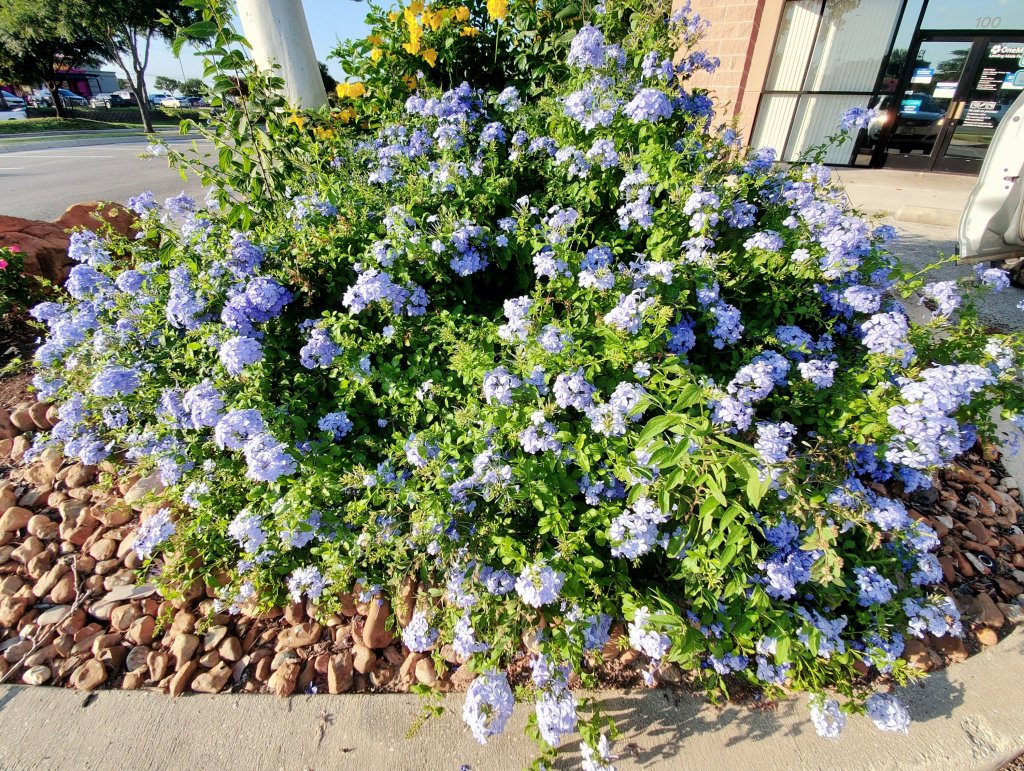
Another beautiful bloomer is Plumbago auriculata. This is a blue flowering shrub from South Africa. People around here often call it Sky Flower or Cape Plumbago. It looks a lot like phlox flowers. Down here it will grow and bloom in both sun and shade, although full sun will give you many more flowers. This produces a mounding mass of flowers and the shrub is trailing and vine like, giving you a fountain of flowing flowers.
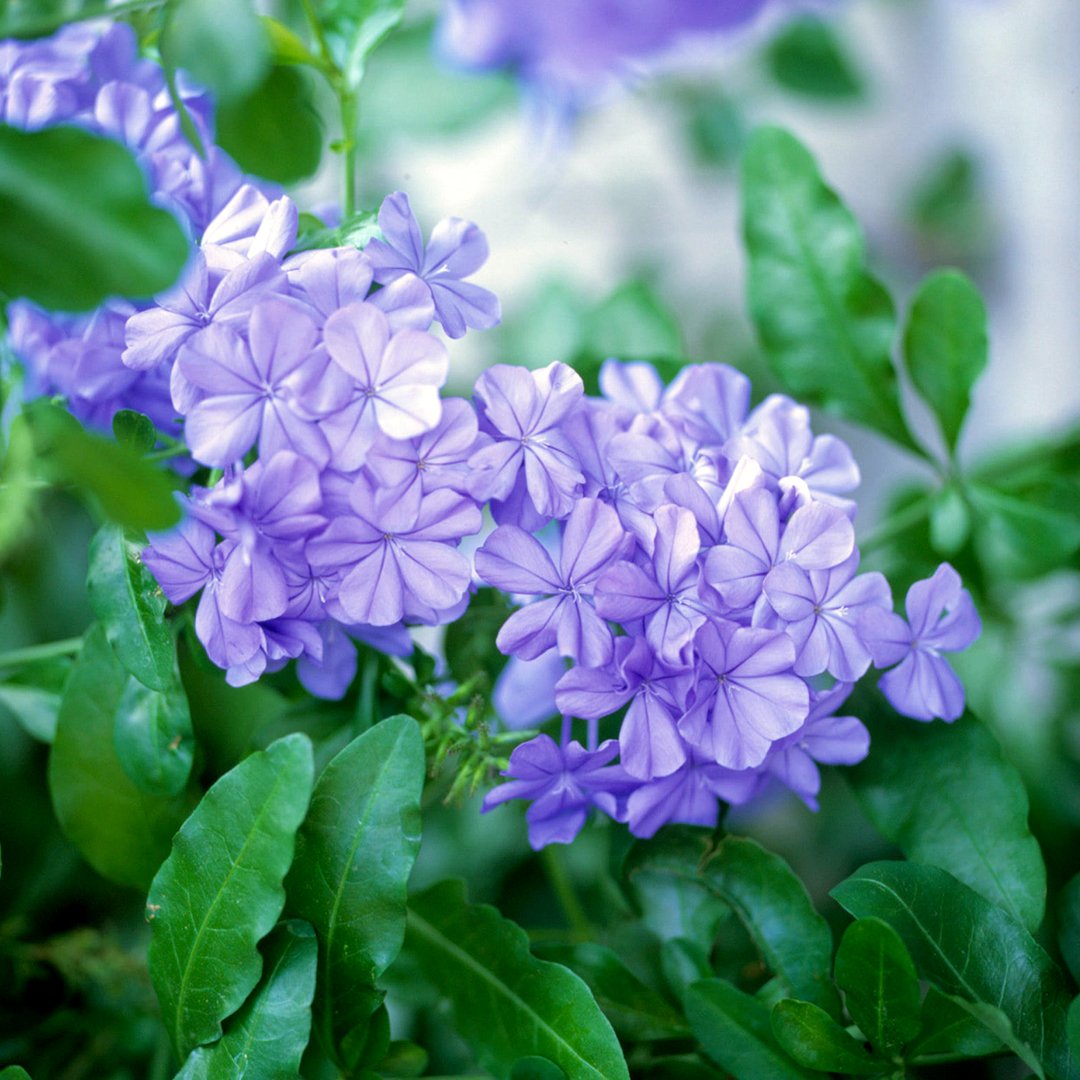
If you are at a garden center and you are unsure if what you’ve picked up is the correct plant: Hardy Plumbago (Ceratostigma) is a ground cover with dark blue flowers. While it has its own reasons for growing it, it isn’t the shrub above.
Another winner is Texas sage (or: Leucophyllum Frutescens) this native shrub loves to put on a show after a rain, blooming in response to humidity and rain storms. It has a pretty, upright and spreading habit but a lot of people shear them back into a more formal hedge. I prefer their natural shape. They require pruning when branches die back or get leggy, or when they need to be adjusted for size. These practices will help them look their best.

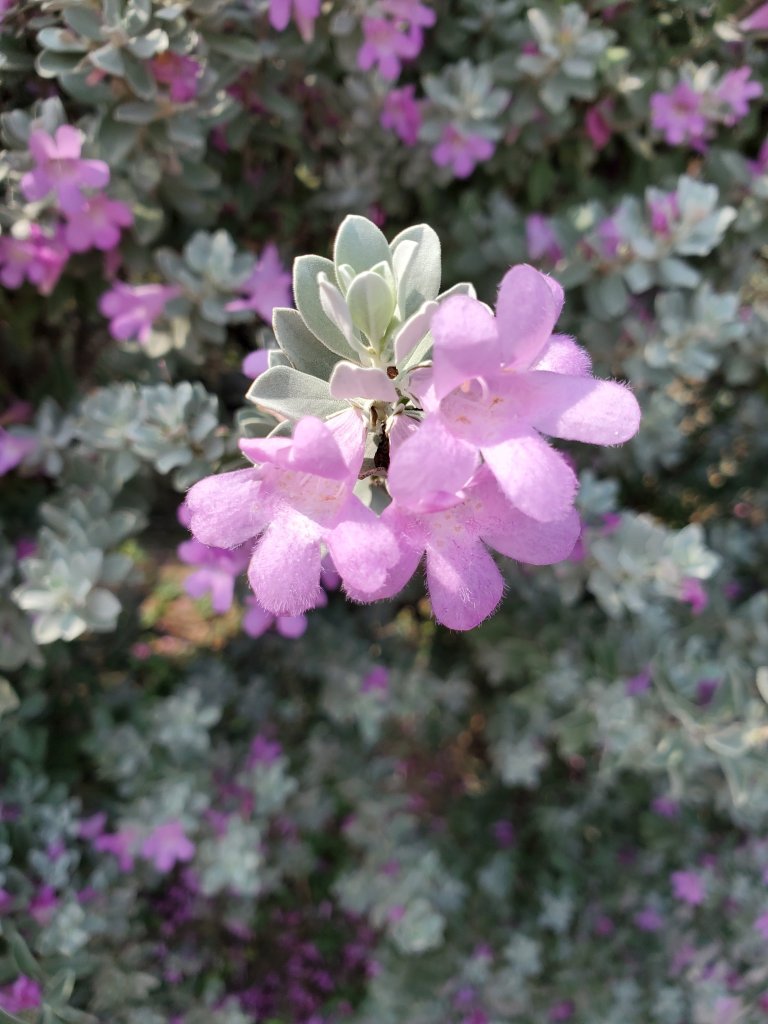
The flowers self clean and make a beautiful purple ring around the bushes. The silver, soft, fuzzy leaves are a nice contrast to the purple blossoms. Leucophyllum langmaniae is a great variety to look for. It’s also called Lynn’s Legacy Cenizo
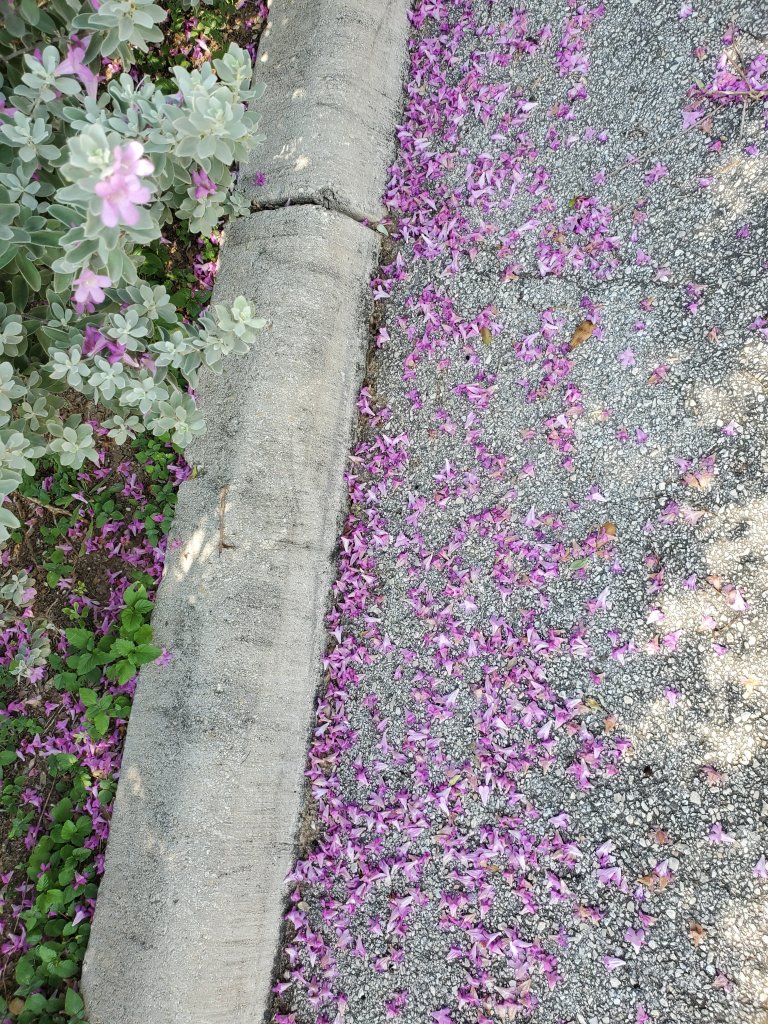
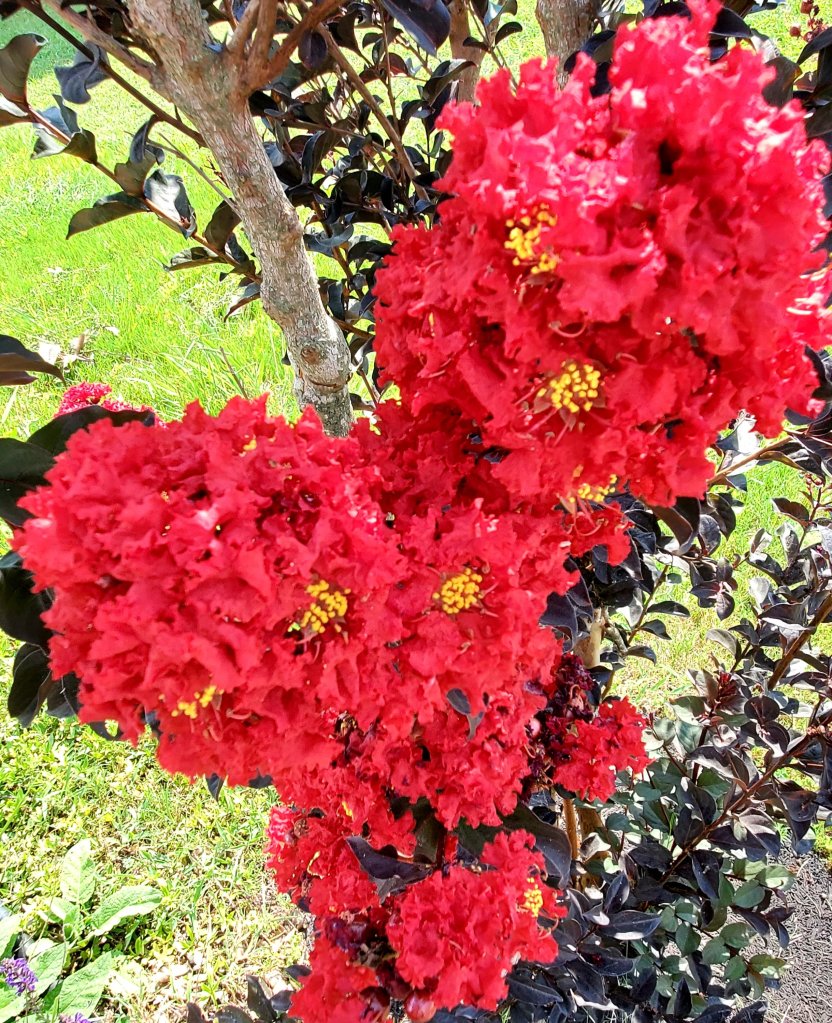
And lastly I do need to throw crepe myrtle in here. While crepe myrtles can be either left as a shrub or pruned as a standard, these are truly a southern treat. The old crepe myrtles were substitutes for lilacs, which will not grow this far south. This is one of the reasons most older stands of crepe myrtles are light purple, pink or a greenish white. The old ones could also grow to be very large trees.
The newer crepe myrtles are where my heart is. Clear, bright white blossoms on chocolatey brown leaves or fire engine red on those same merlot/chocolate leaves. I love them! These stand out in the landscape and bring attention to themselves. Mine have been very slow growing, but they are finally getting large and the flowers are real show stoppers. Mine gets a really agressive spider mite on them that spin crazy amounts of webbing, but they’re easy enough to remove with a stiff spray of a water hose. I don’t recommend using insecticides on them, because you may affect other flowering plants and accidentally kill off beneficial insects. Plus, getting inside the webbing that spidermites make is tough for an insecticide and really ends up being a waste of energy and money.
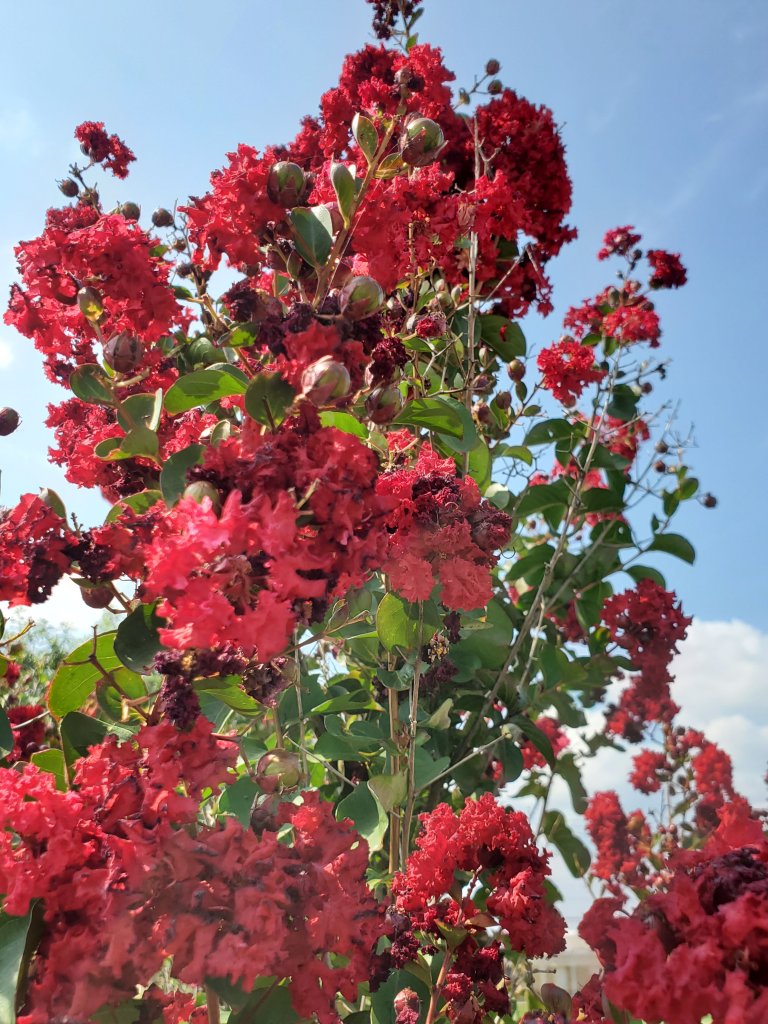
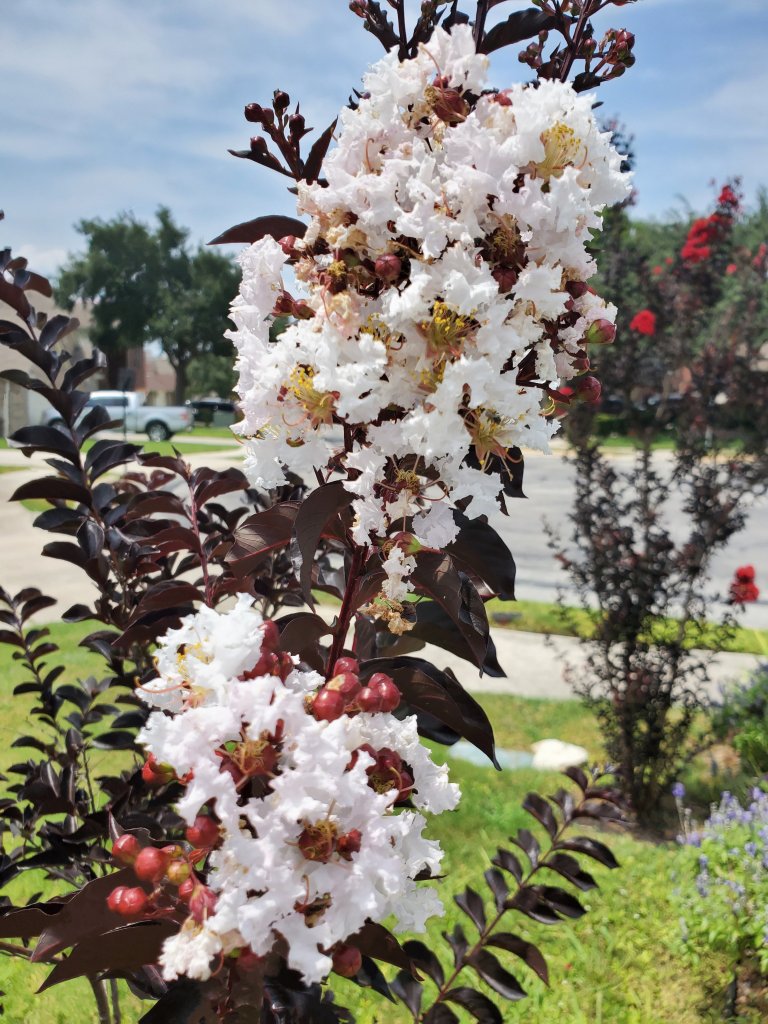

Oleander is one beautiful shrub, that I do not grow. Oleander is super poisonous. In Asia it is sometimes used as a suicide agent, so take that thought with you when you go to your local nursery and see these incredible blooms. The flowers are exotic and definitely stand out, but with pets and kids it’s a no-no. If you are interested in growing it, despite its nasty reputation, the bush is amazing. It covers itself in flowers and the only reason I avoid it is an accidental death if my dog nibbles on it. (Which he tends to nibble on all of my plants, you know: in case I formed a bush out of steak or something. Just to be sure. Those humans are tricky!)
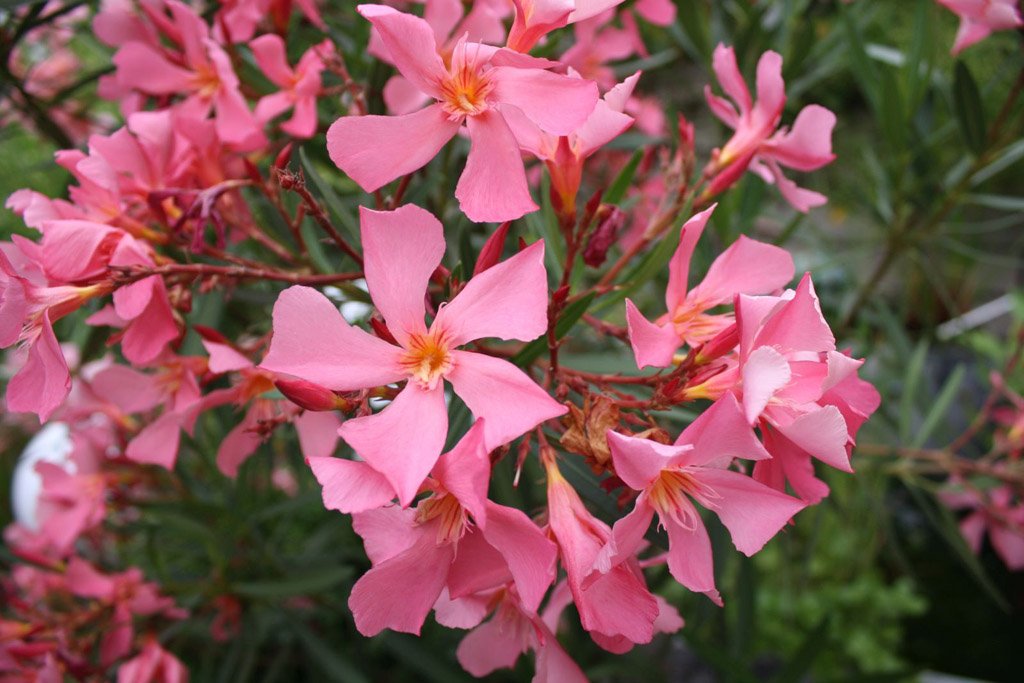
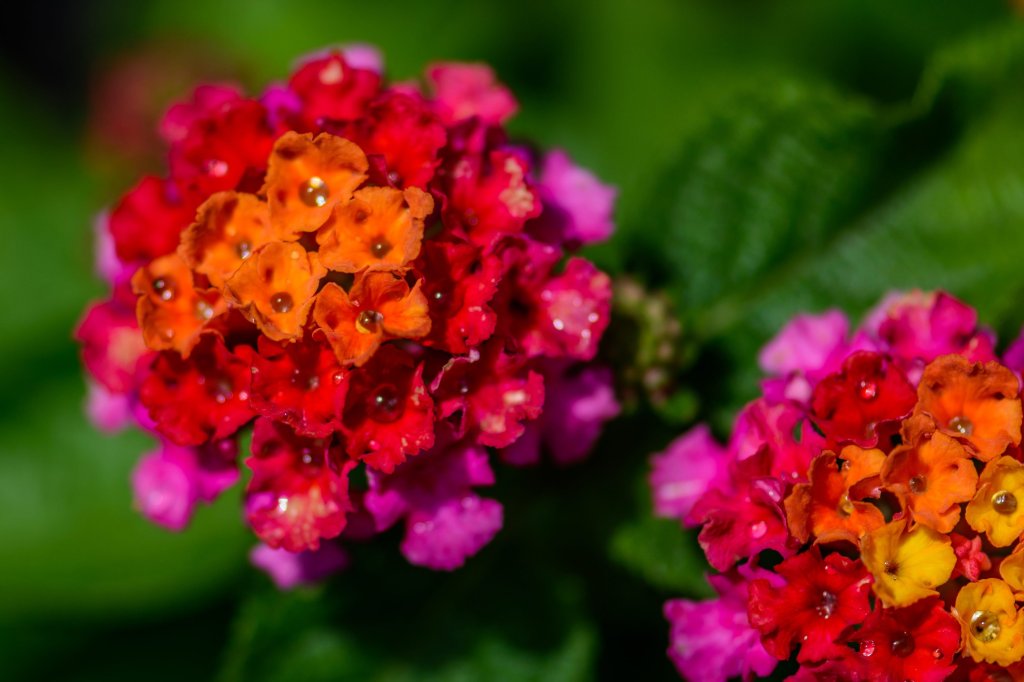
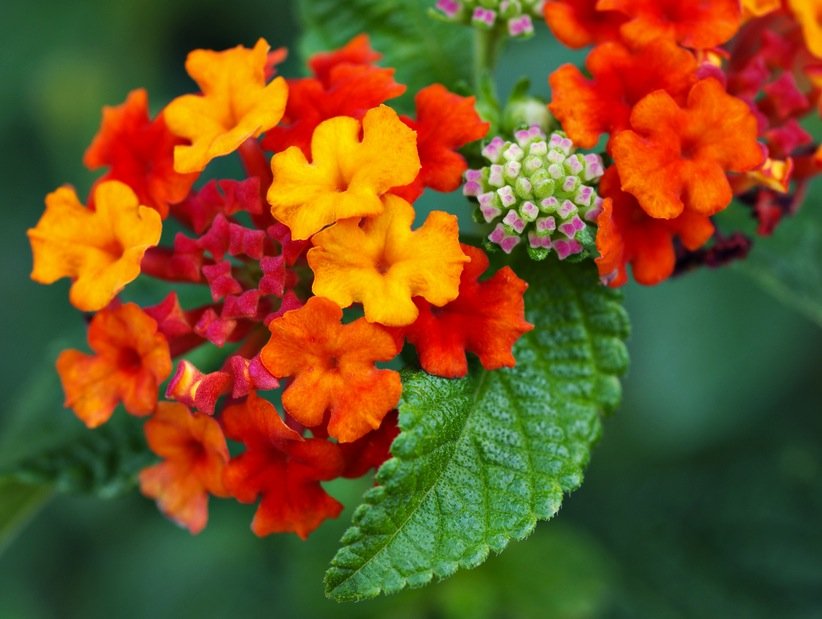
Another plant, that I’m not sure where to put on this list, is Lantana (Lantana camara). Lantana covers itself in flowers. The variety of colors within the same flower clusters is magnificent. But: down here, Lantana can be invasive if it is not a sterile variety (do your research before you install Lantana.) Also, the flowers aren’t something that will make you walk down a long street to see what they are. Up close, Lantana is a wonder to behold, but stand 10 feet away and it’s not nearly as impressive. This is something you plant because you love it, not something you plant to impress the passerby. And, this is also poisonous. My mom used to put some in our sun tea when we’d work in the yard when I was a kid. It does taste nice. Too bad it’s definitely not good for you!
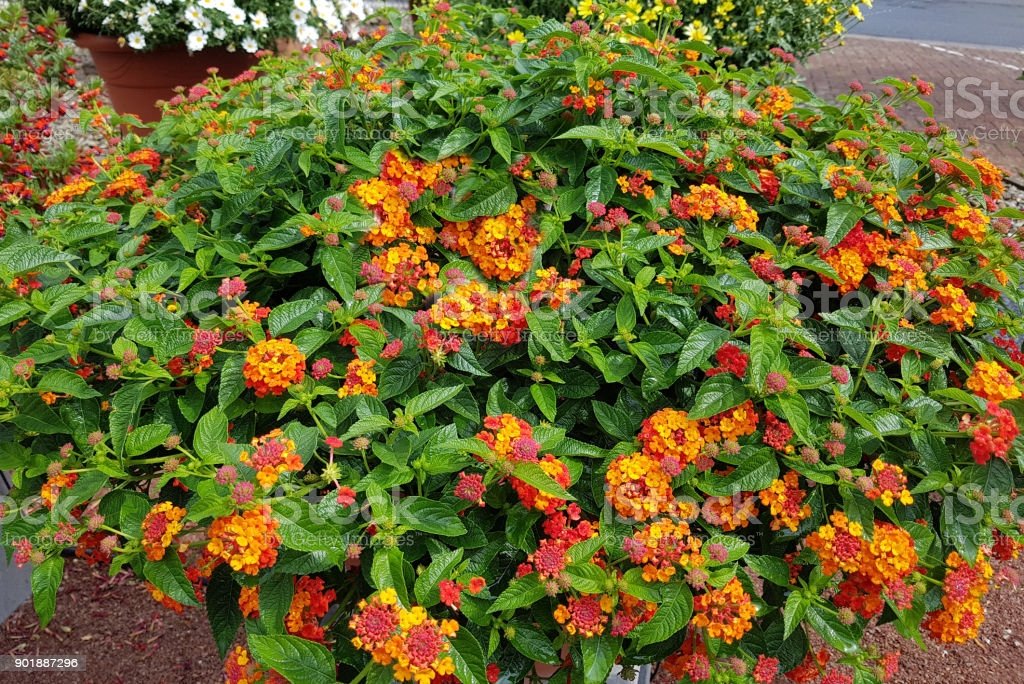
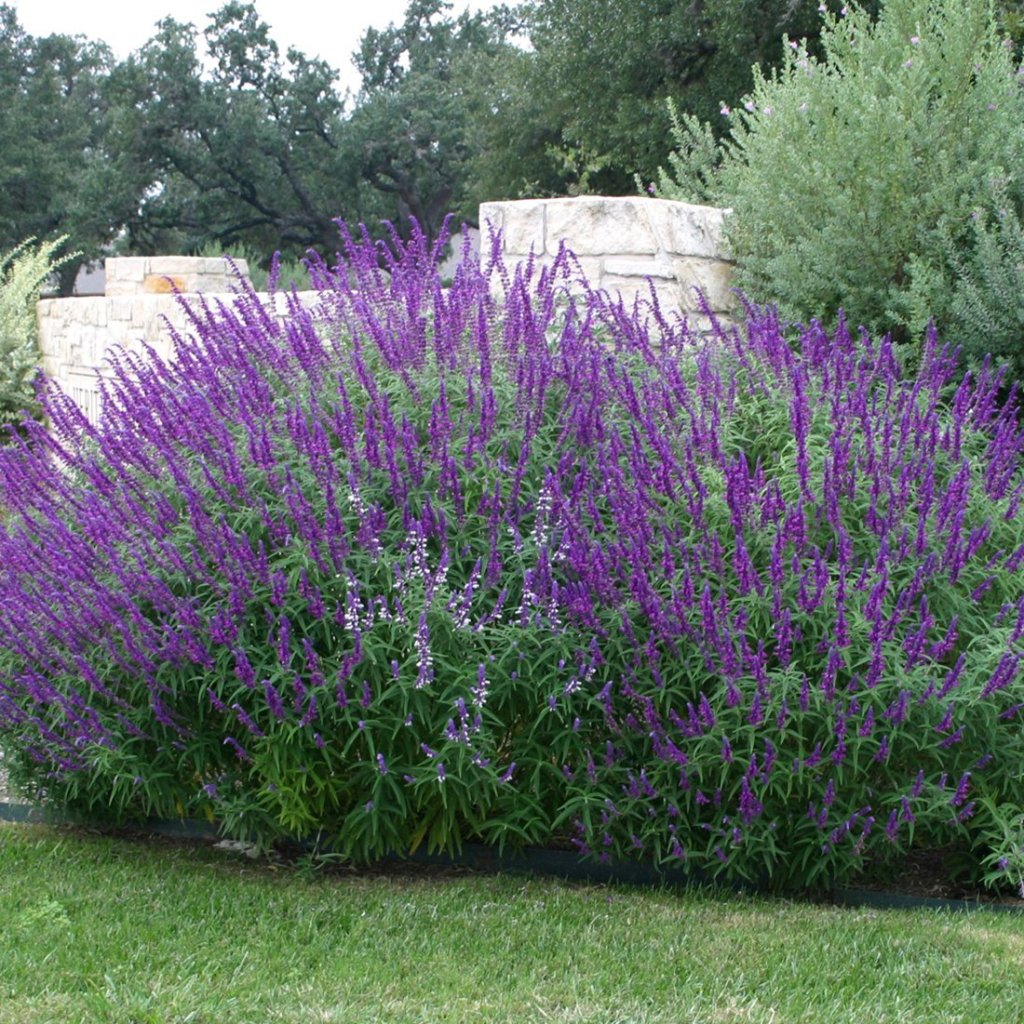
Mexican bush sage (or literally any perennial sage/saliva that you can find) are great growers down here. I have spring blooming salvia offset with summer blooming salvia in my front strip by the driveway. They take turns blooming. Mexican bush sage basically looks like a giant form of the small mounding salvia/sage perennials you can find in the garden centers.
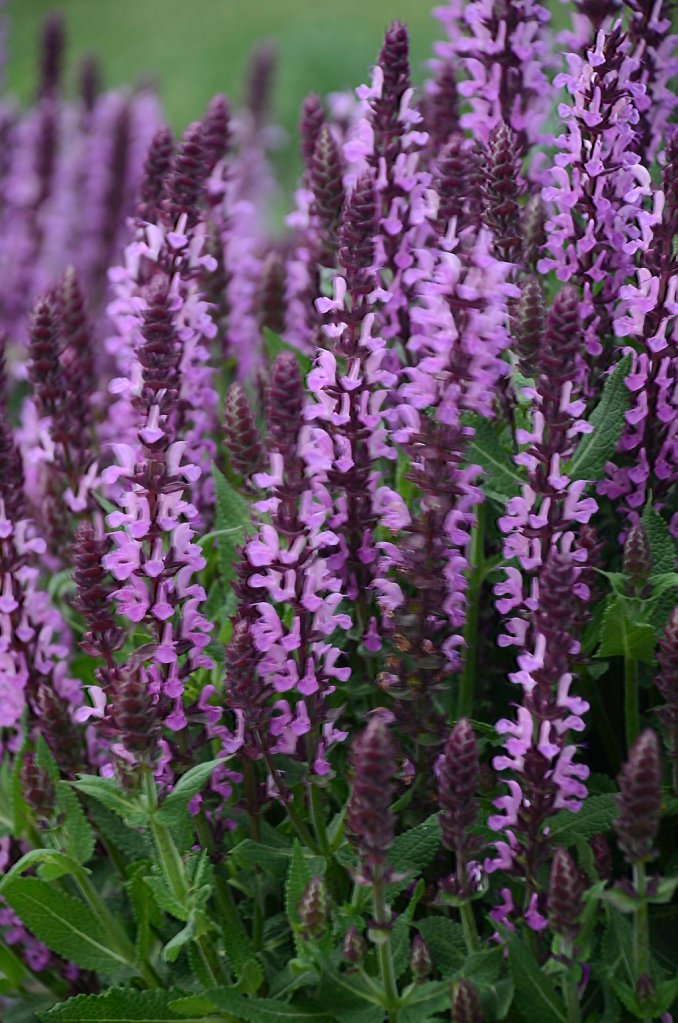
Are there other bushes that grow down here? Yes, of course. But none are as impressive and as self reliant as these are. These flowering bushes are easy to care for because they are drought tolerant, will take our high pH soil in stride, have reliable flowering habits and are generally well behaved.

There are some shrubs that I do not recommend. Roses are at the top of the list. Yes, there are roses that are recommended by Texas A&M University (aka TAMU). Plus some people don’t believe it’s a garden without roses, but most roses really struggle with our heat, drought and high pH soil. I have tried the Belinda’s Dream rose. I ended up pulling it out. The plant looked beautiful in spring but like most roses, it just looked ratty and messy during the heat of summer. Same goes for knockout roses: they look beautiful (in spring) and then they don’t (the rest of the year). Belinda’s Dream also wasn’t as carefree as it’s advertised and mine got rosette disease (or witches broom.) Probably from all of the other sickly roses in my neighborhood, that are not suited for our climate.

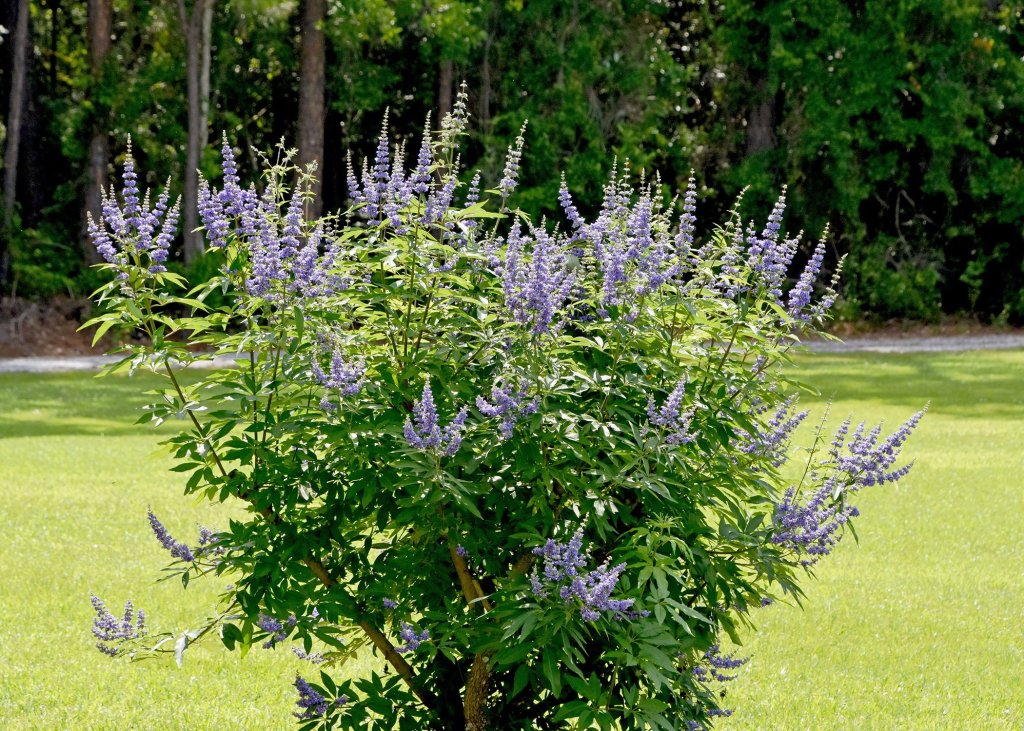
There’s Vitex or Chaste Tree (Vitex agnus–castus is a recommended variety) it is a small tree or woody shrub with beautiful, long purple spires. It is being considered for addition to the list of Texas invasive, though, and it’s flowering season is fairly short. Once it’s done flowering it is not a particularly beautiful plant. However, it is indestructible and therefore worth considering.
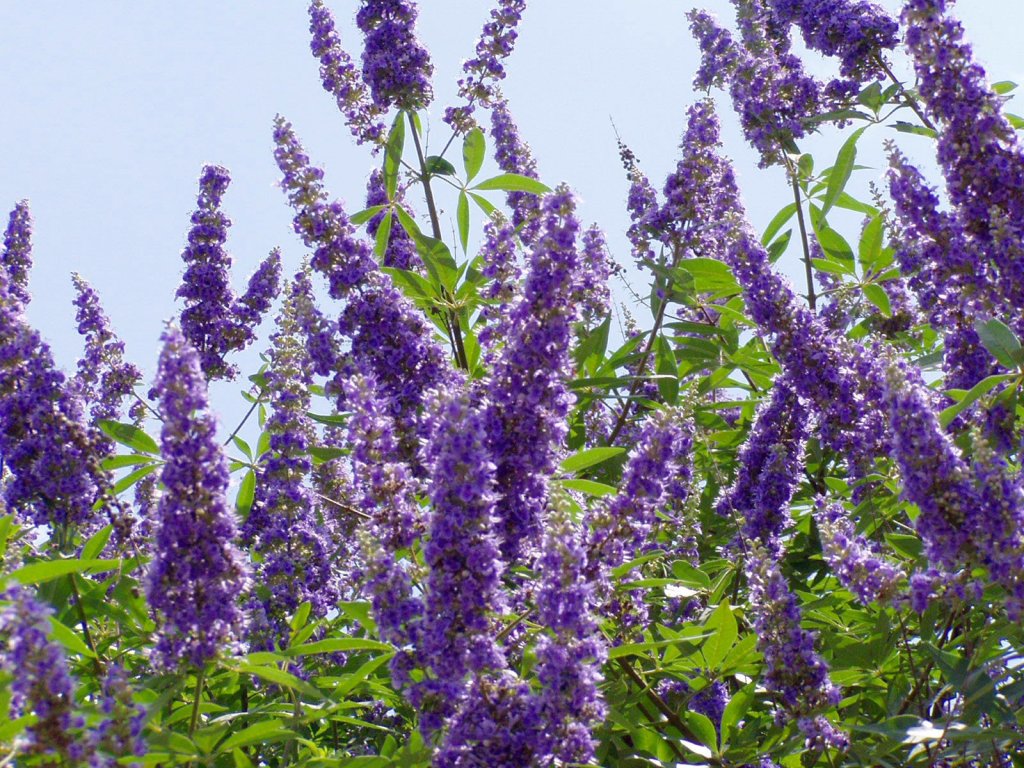
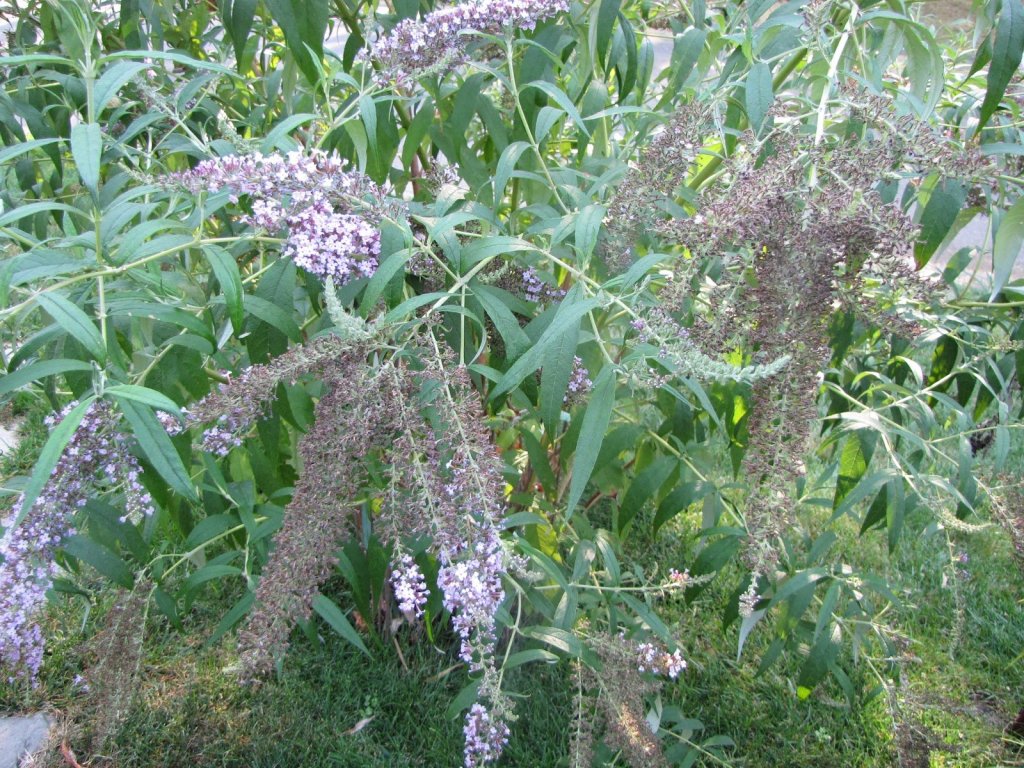
I also don’t recommend butterfly bush (Buddleia). Those are not self cleaning and those giant flower sprays eventually brown and stay on the plant until you remove them. I have things I actually really need to do in our summers, so having to clean up butterfly bushes in 100 degree heat is just annoying. I have also found that they don’t take drought well and there are better plants for butterflies. And lastly: butterfly bush is invasive.
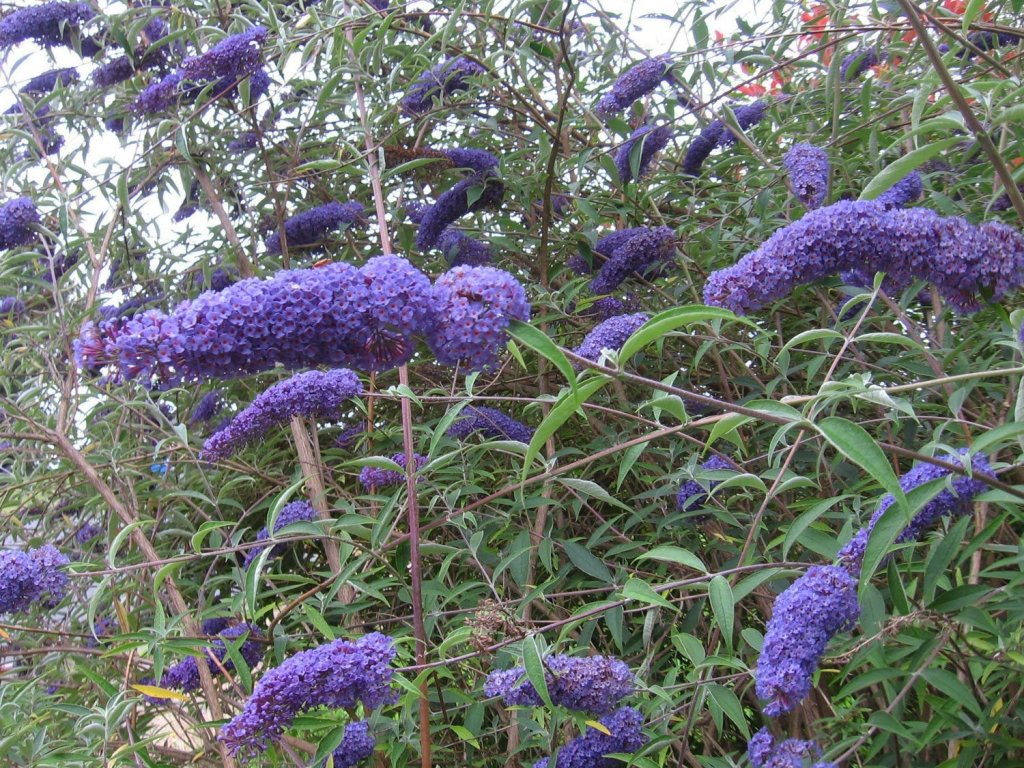
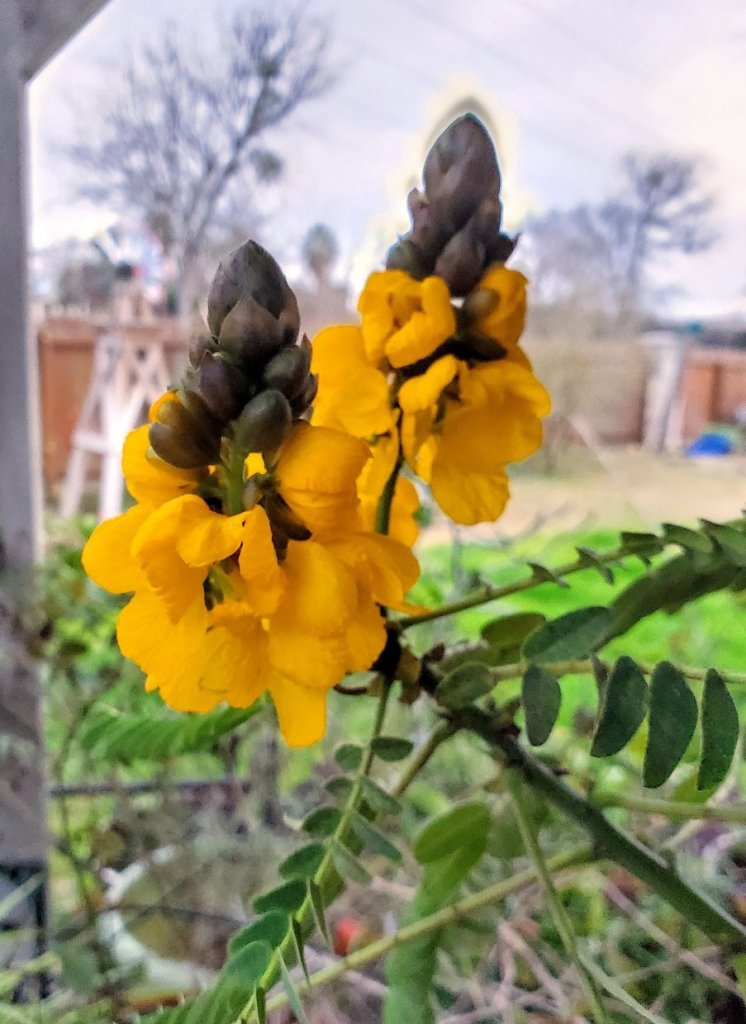
One plant that I loved but it doesn’t make it through our winters is popcorn cassia (Senna didymobotrya). It blooms during our winters. So, it’s green when we get freezes. Because it’s actively growing when we freeze: it completely freezes back and dies. Last year, I had to travel during the holidays so I put all of my potted plants in the ground hoping some would make it. The popcorn cassia did not. However, I love the blooms (and the buttered popcorn smell from the leaves) enough to buy another one. It will have to come inside for the winter.
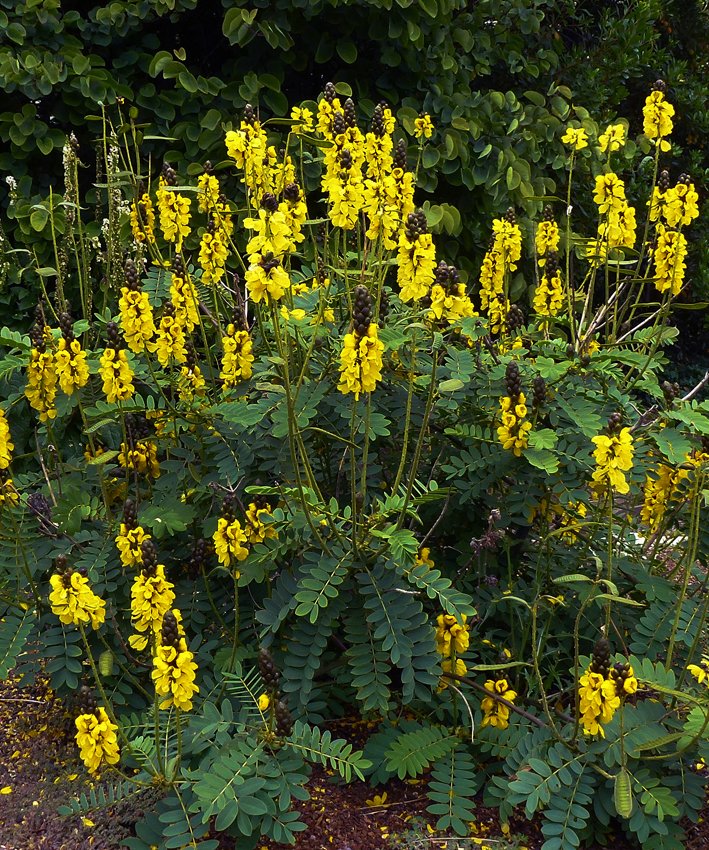

Another plant I love, but have trouble with, is Althea or Rose of Sharon. It is a hardy hibiscus. I keep losing the plants at the end of the summer through wilt disease. This has happened to multiple plants across my property. There has to be a source of infection, so I may just not be able to grow it. However, I tried growing the same variety twice, so it may be time to try the Superstar version.

There is a list of plants Texas agriculture recommends. It’s here: Texas Superstars There are Althea varieties that they recommend but I am still in the process of finding a variety that will make it past my late summer weather. Althea will grow in cooler climates. We are at the southern end of its grow zone, as it does well from zone 5-8. You will find them across Kansas. Tropical hibiscus is one of my favorite plants, so I’m hoping to find a hardy version that has blossoms I like.
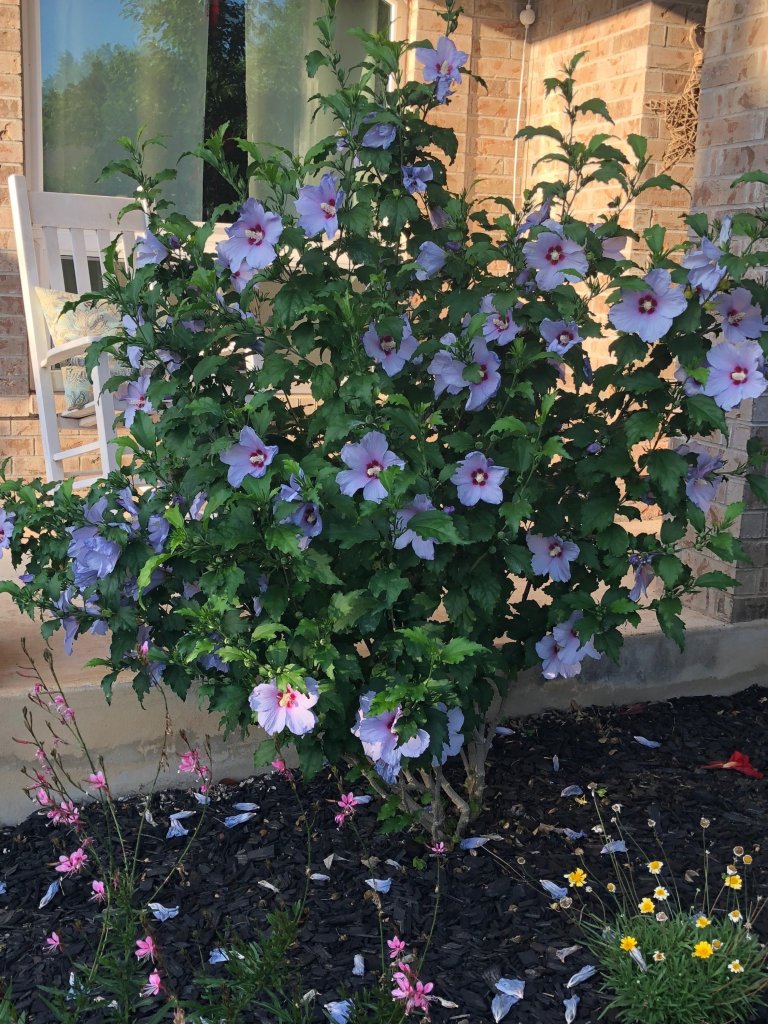
Do you have a favorite flowering shrub where you live? Have you tried growing these varieties if you are in a hot, arid 8b zone? Let me know your thoughts below and get out in your garden and get your hands dirty!


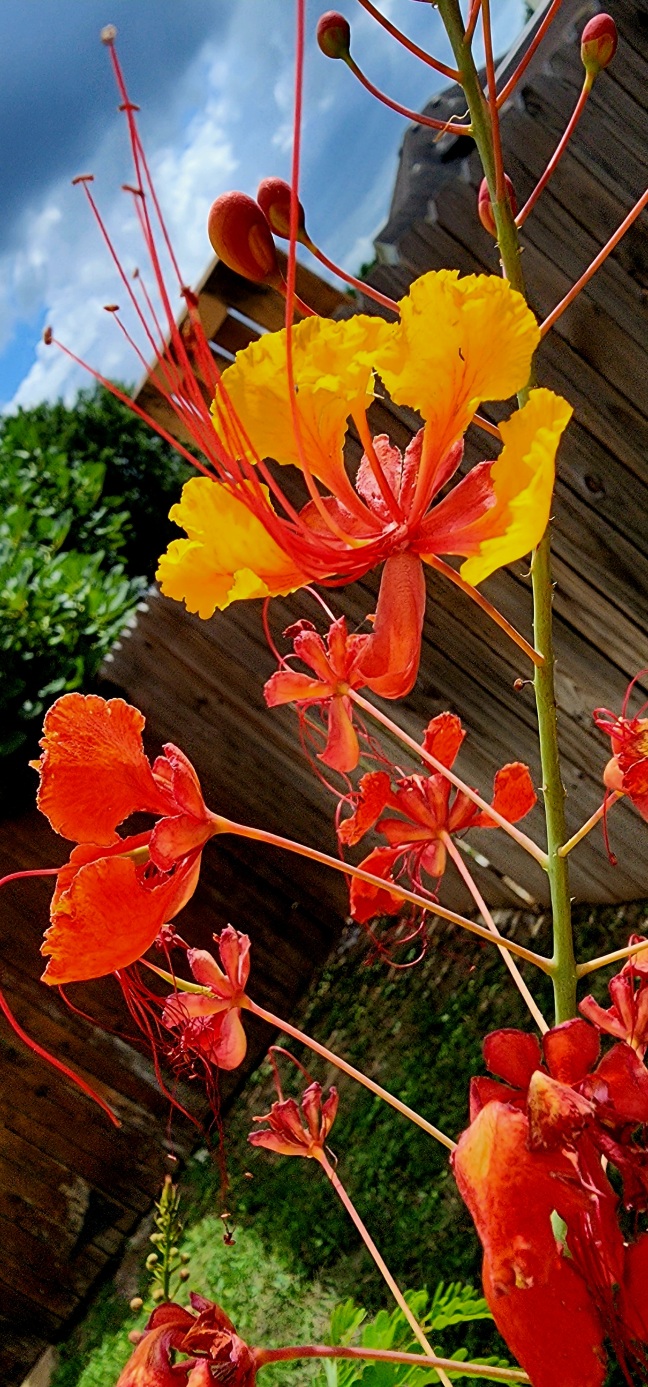
Absolutely beautiful
Gads! This is not easy to write about. The second batch of seed for Caesalpinia Mexicana that you sent to me is also not growing. I scarified the seed this time, and after all this time without any activity, I noticed that they outer shells of the seed have worked their way to the top of the media that I started them it, but they are hollow! I have no idea what happened to the seed! There were no snails or slugs or anything to eat them! Some may still be in the media, so I am not giving up yet. What is worse is that the Tecoma Stans seed is not growing either. That might be a result of the mild weather, so I am not too worried about them yet. They grew last time, but did not survive afterward. I am very grateful for these seed, so REALLY do not want to tell you that they are not growing.
Well. Maybe there’s a reason you don’t see them there? I have never had the tecoma stans randomly come up from seed so I was actually surprised that they sprouted for you. The ceasalpinia Mexicana does come up from seed, but I believe it has our horrible heat and then some cold weather over winter work on them. Last year was super hard on both plants. We had months above 100 degrees and two rain storms. I think that is what is wrong with my pear. Plus, the main bird of paradise plant died. It came up, it flowered. I would have thought somebody sprayed it with Roundup. Really quick death of the entire plant with the leaves still on it. I have no idea what happened. It was a ten year old plant. I had part of the sprinkler blocked so maybe that did it. It wasn’t a good year for that guy. However, I have small ones coming up from seed. We have such long droughts, I wonder if those seeds want to be dry, hot and mistreated before you bother planting them? Don’t feel bad. I started the tecoma stans from a cutting and I’ve tried starting more and none of them survived. I can’t remember if I did anything special it’s been so long. I usually just start things in water by my kitchen sink!
Poinciana probably lives for only a decade or so. Most related species are like that. Western redbud does not even live that long, but it is distressing for those who are not aware of its brief lifespan. It produces an abundance of seed just before it dies. I try to remind those who grow it that they should allow at least one of its seedlings to grow as the original begins to deteriorate. Like poinciana, they can go suddenly. I am unfamiliar with the species, but that is my guess. When I finally get to grow it, I intend to collect seed to be ready for its expected demise. I have not totally given up on their seed yet, since I have not actually found any that are dead. I only found their outer shells, as if they germinated and then pulled themselves lower as their discarded shells sifted to the surface. I suppose that is possible. I want as many as possible to germinate, but would be pleased if I could get one started. It can provide more seed later. I suspect that the esperanza will grow now that the weather is warming. The weather has been so weirdly cool until now.
Yes. I wondered about it’s age too, but I had hoped part of what was growing was newer plants that had come up inside the same area from seed. I had another one die on the other side of the house, and that one didn’t make it through winter and was a new plant. Just didn’t have the root system for cold dry winters yet. I do have others coming up near the one I sent you seeds from (that croaked.) I will see if I can move them this fall. They’re coming up under other plants. I hope your seeds show you signs of growth soon. I love both of those plants, I’d really like you to be able to enjoy them at their full size too!
Oh, I am SO ashamed! I ‘could’ have purchased one in Arizona, but am determined to grow these seed!
i am support it.
good morning.